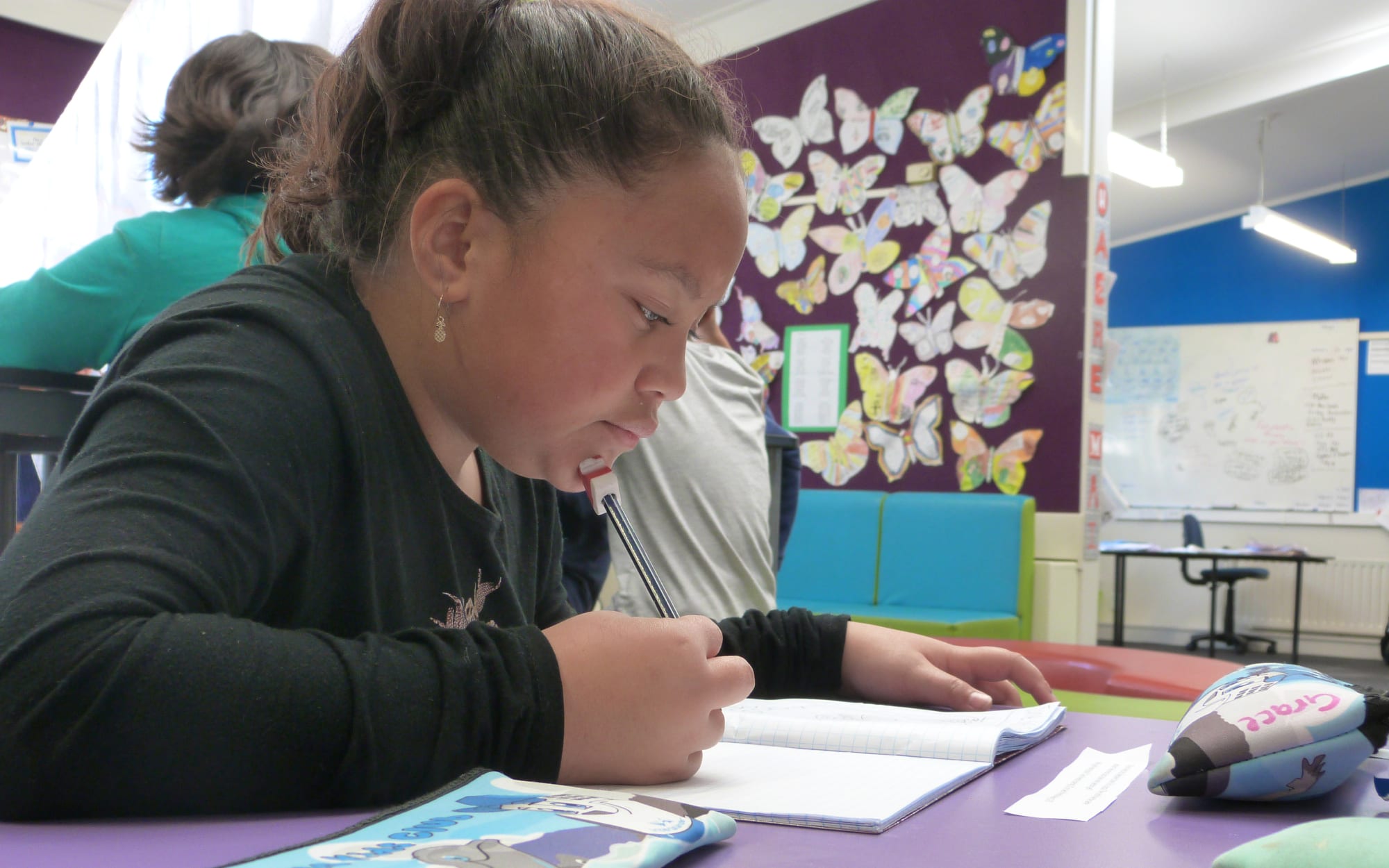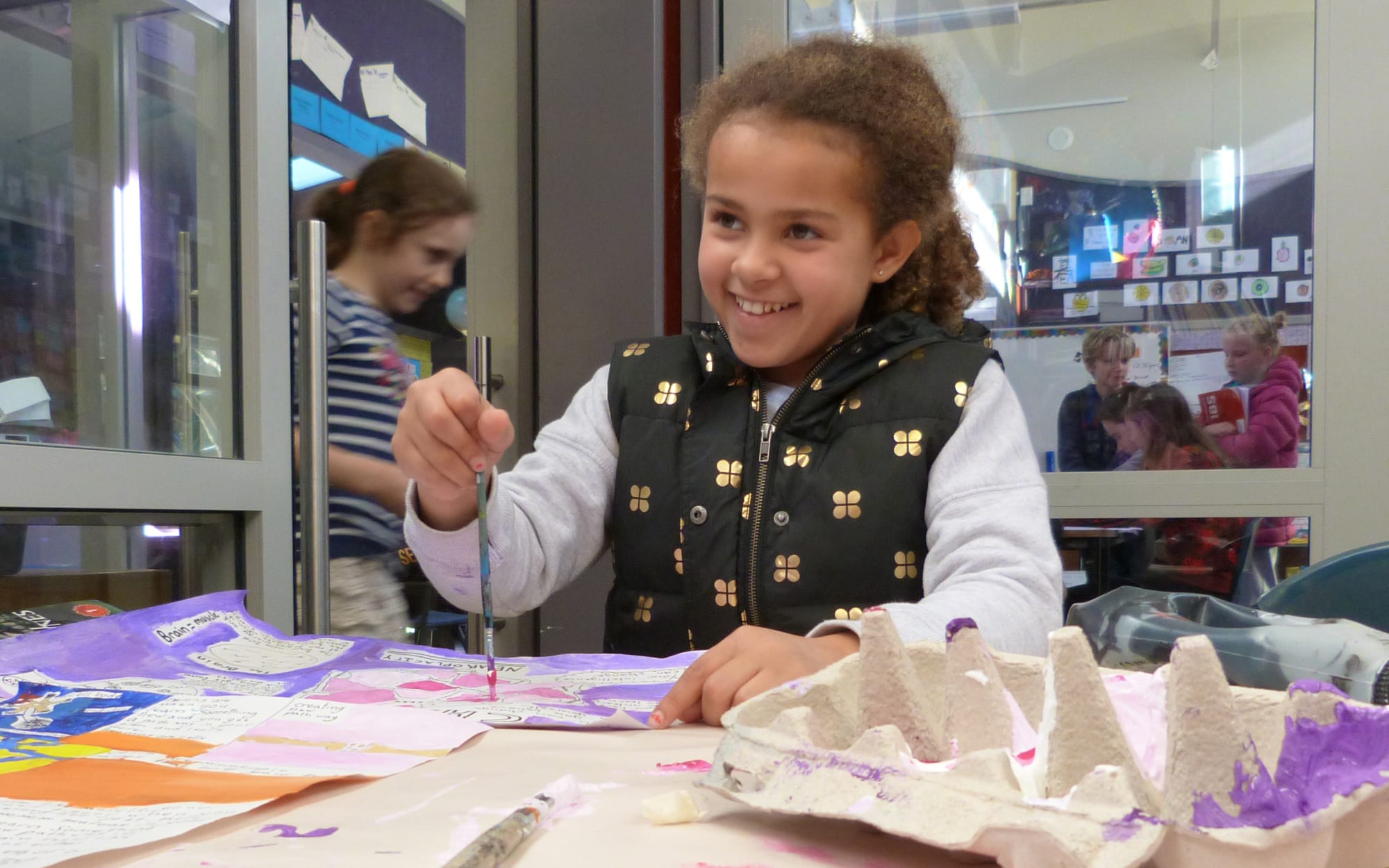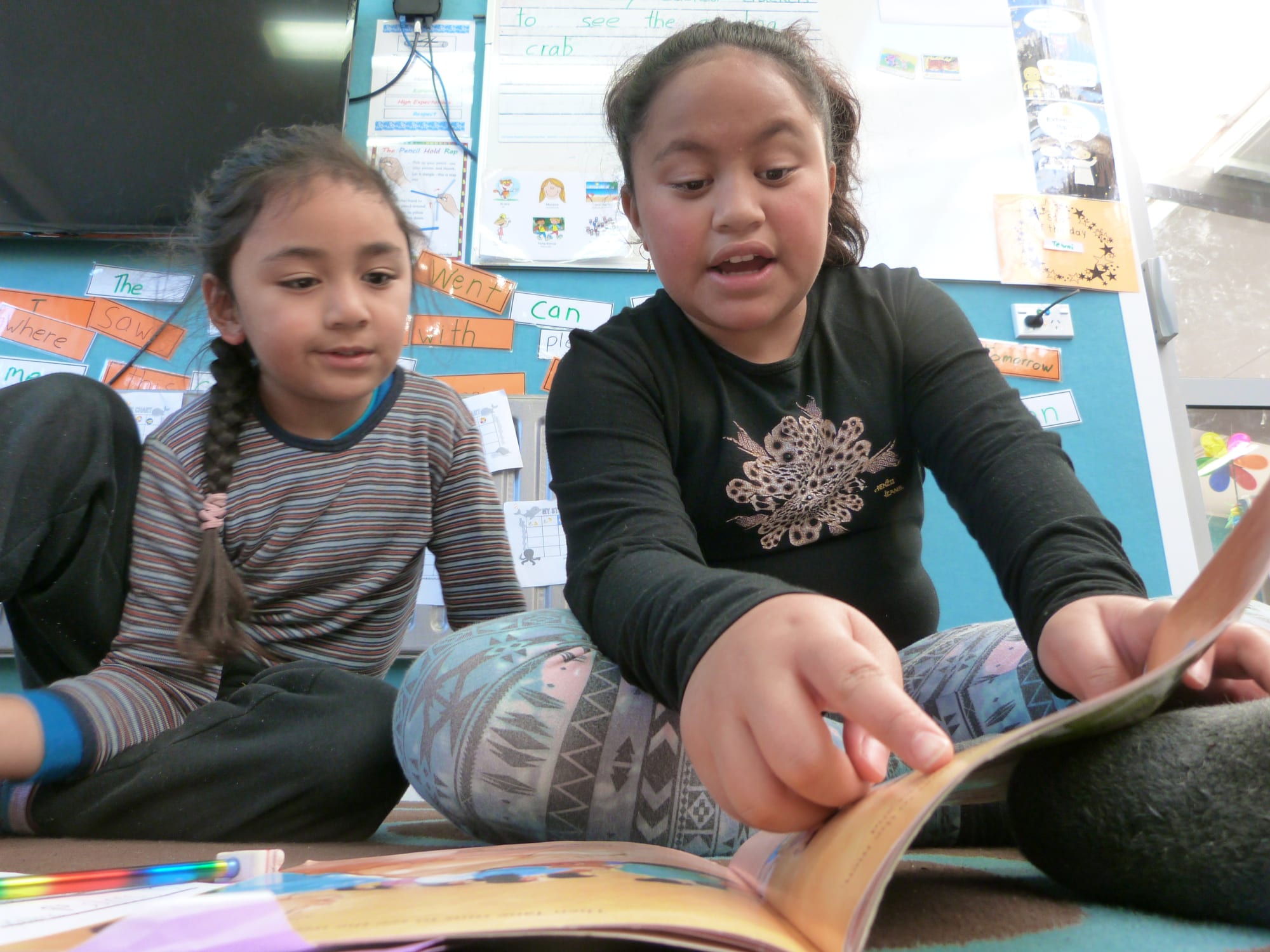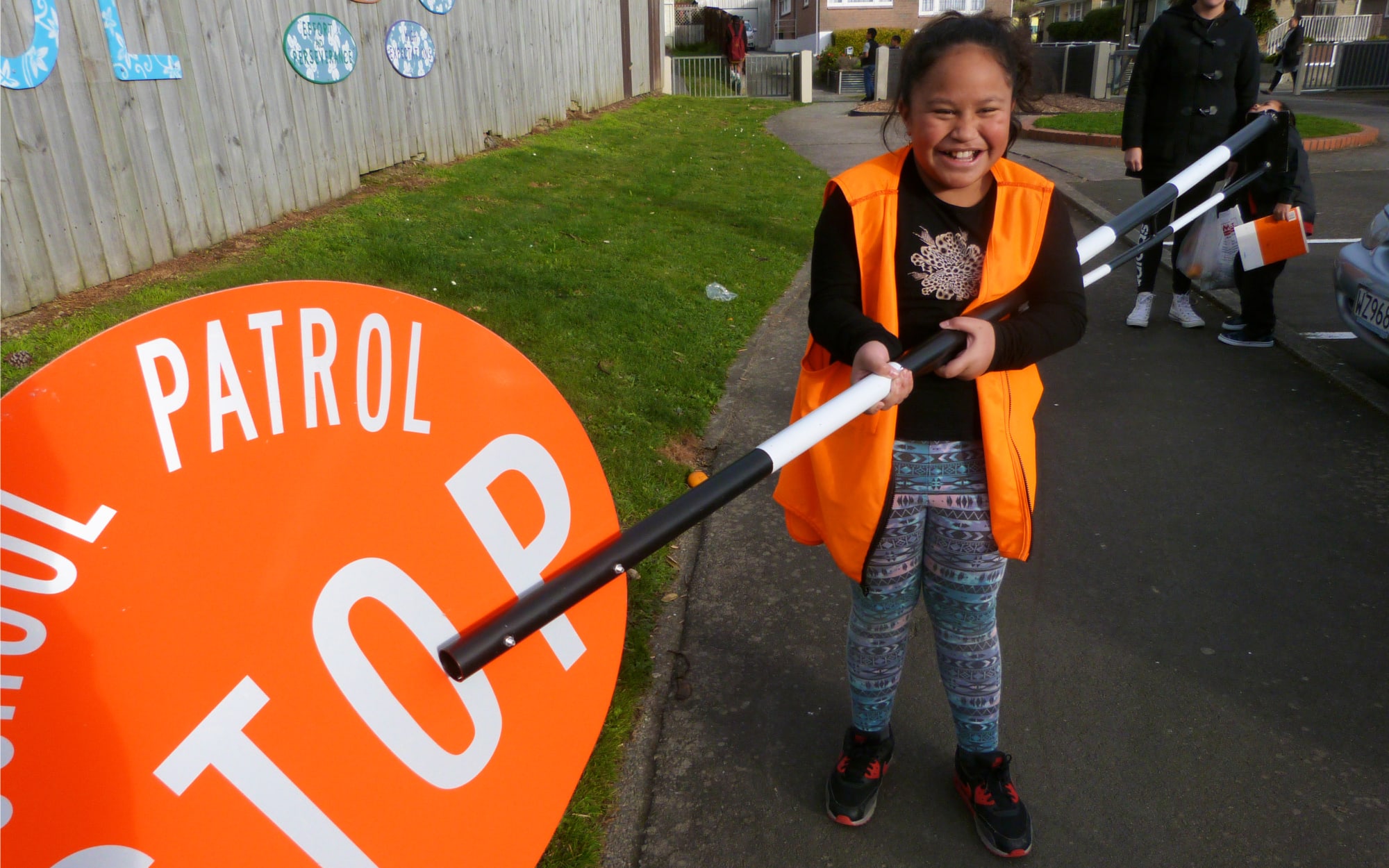On a late-autumn morning in Porirua, nine-year-old Hazel walks past the low school fence, across the playground and into the warm hall at Maraeroa School for breakfast.
Normally she'd ask for cornflakes, but today she settles for just a milo.
"I'm not allowed sugar this month because I'm doing Junk-Free June and so I can't really get the cornflakes with sugar," she says.
Hazel is one of about 30 children who get their breakfast at Maraeroa each morning - about a quarter of the decile 1 school's roll.
Over the hill in Wellington, and at the opposite end of the decile spectrum, Sienna, also nine, has just finished a before-school netball practice at central city Clyde Quay School.
School starts the same way for both girls: a karakia, roll call, and then out into the playground for fitness before classwork begins in earnest.
The classrooms at both Maraeroa and Clyde Quay are of a similar vintage - low, wooden buildings adorned inside with children's art and posters.
The children work in groups around tables or on the floor.

Sienna figures out averages during a maths class at Clyde Quay School Photo: RNZ / John Gerritsen
Standards and statistics
While their days look much the same, Hazel and Sienna's schools are quite different.
About 61,000 children attend a decile one school like Hazel's and they tend to be on the smaller side - Maraeroa enrols 124 pupils, though it has room for more.
Decile 10 schools enrol about 110,000 children and are generally much larger. Clyde Quay School has 237 pupils and is approaching the limit of its capacity.
While decile 1 schools are by their very nature made up of children from more disadvantaged neighbourhoods, the prevalence of deprivation has grown between 2008 and 2015, when deciles were last recalculated.
In 2008, about 38 percent of children going to decile 1 schools came from low-income areas. That figure rose to 42 percent in 2015.
Half came from areas with over-crowding and a third came from areas where income support is common.

Hazel is one of 30 children who has breakfast at decile 1 Mareroa School Photo: RNZ / John Gerritsen
In decile 10 schools, only 10 percent of pupils are from low-income areas and even fewer experience over-crowding or benefit dependency.
Clyde Quay principal Liz Patara says the school raises about $90,000 from donations and fundraising events each year.
Maraeroa managed to raise $2000 last time it held a school gala but generally avoids asking families to provide more money.
Principal Kathleen O'Hare says circumstances have actually improved slightly in her area.
"A lot of our parents are studying, there are some parents who are not working, [and] we have some families where both parents are working."
That includes Hazel's parents, who both have jobs.
Ms O'Hare says the improvement has pushed the school's decile rating from 1A to 1B, meaning the amount of extra funding it gets to help it overcome students' disadvantage has dropped from $915 to $850 per student.
The impact of disadvantage is clear in the school's results in the national standards in reading, writing and maths.
Nationally, 70 to 78 percent of children are at or above the standards for their age group, but at Maraeroa the figure drops to 21 percent.
All but four of the school's children are Māori or Pasifika and many struggle with the school system, Ms O'Hare says.
"The curriculum is ... based around white middle-class and it doesn't reflect our students, and so our children are already coming in behind."
Pupils at the school arrive with good oral skills in their home language, she says.
"How do we marry it up with the national standard? That makes it quite difficult for us."

Sienna works on an art project during class Photo: RNZ / John Gerritsen
Great expectations
Clyde Quay School is culturally diverse - Pākehā children account for 46 percent of enrolments, Indian and 'other' ethnicities for about 14 percent each, and Māori for 8 percent.
Principal Liz Patara says about 100 of the children have a home language other than English and about 80 percent of the children are at or above the national standards.
"The community's pretty affluent and with that you would expect the children to do well," she says.
"Our children do get lots of experiences provided by their families. Many children don't have an afternoon free because they're either doing sports or they're going to music lessons."
Sienna, who enjoys sport, has a weekly after-school schedule jam-packed with swimming and gymnastics, as well as violin lessons. At lunchtime today, she plays netball with a friend.
Hazel spends her lunch break at a Samoan dance practice. She likes reading and is looking forward to dancing at an upcoming event for the Cook Island community.
Ms Patara says children at Clyde Quay will generally do well in life.
"The expectation is that most of them will receive a tertiary education. They're going to succeed without a doubt and their parents will make sure they find a niche in life."
At Maraeroa, most children will go to the local intermediate and college just across the road, though some will bus out to higher-decile schools in other locations.
Hazel says she would like to be doctor, while Sienna is interested in sports medicine and law.

Hazel helps a younger pupil with reading. She would like to be a doctor when she's older. Photo: RNZ / John Gerritsen
The girls' days finish much as they started.
Sienna is off to another sport, this time gymnastics.
"I really would like to do more," she says. "I'd really like to try basketball and maybe dancing, but there's just not enough time in the week."
Hazel gets another cup of milo in the staffroom after her school crossing duty, before walking home with her little sister Ria-Grace.
Ms O'Hare says the school has been asking children and their parents about their aspirations.
"The three children I spoke to the other day all said to me, 'Our parents want us to have a good education and they want us to have a good job.'
"Our children want to go far."
RNZ's election series Is this the Brighter Future? examines the government's record since it was elected in 2008. Read more here.
Main image: Hazel on road patrol at Maraeroa School, Porirua (RNZ / John Gerritsen)



